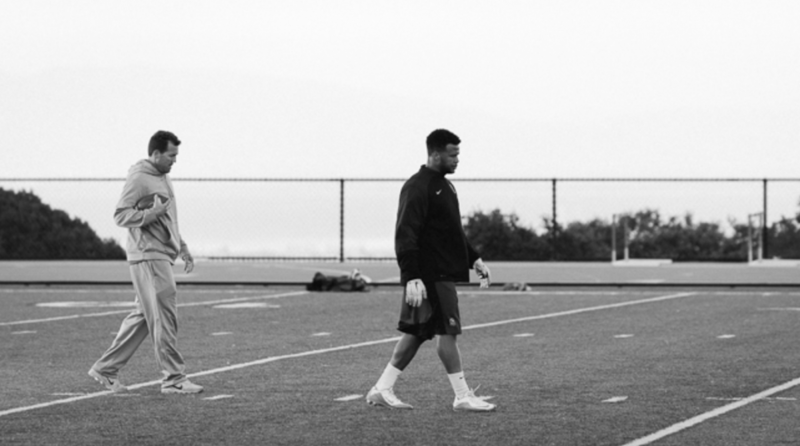
Over the past 14 years in professional football, a few injuries remain cemented as leading causes for players missing time away from football. Among the top four, lies a few common culprits that show no signs of slowing down with each new season; ACL, LisFranc, and Hamstring. Below is a breakdown of such injuries from a great write-up by an epidemiologist on Football Outsiders.
Both of these injuries tend to occur from a twisting force that either rupture a ligament (both) or break/shift in the bones of the midfoot (LisFranc only). For example, such injuries often occur when your foot is firmly planted on the ground and a sudden large force is applied to the body. This can happen when you are changing direction rapidly, slowing down when running, or landing from a jump, all of which are common mechanisms in sports.
Although multiple types of Movement Signatures have been linked to ACL injuries by predictive modelling, the signature to the right is the largest risk and termed “Extreme Load”. This signature qualifies as Extreme Load because the Load value is 15+ greater than the other two concentric variables.
While we have created clear predictive models for injuries, we may never know exactly why this pattern causes the injury. The theory behind such a pattern’s risk is that the athlete creates substantial initial force (LOAD) yet is unable to disperse that force production over time. In other words, the athlete twists instead of bending. This twisting places a large stress on those hinge joints and associate ligaments like the ACL and foot.
Football presents an additive problem compared to other sports for a few reasons. First these athletes just weigh more, and body mass is really just your resting force applied into the ground. Secondly, football athletes have considerably more rest than other sports due to the timeouts, set plays, only playing offense or defense, and free substitutions that support an overall strategy that can emphasize very different skill sets from a broad spectrum of specializations. Inevitably, football poses a greater injury risk due to the inherently greater rest provided to athletes which allow them to produce more force, regardless of contact.
The demands and stimulus of the sport contribute to higher LOADs for football athletes, elevating the risk of ACL and LisFranc injuries. In addition to these LOAD stimuli, most athletes continue to perform heavy, bilateral movements in the weight room which further develops higher LOADs.
The key is never to add more stimulus, but replace for greater efficiency, so reducing the stimulus of LOAD is as crucial of an action as providing more stimulus for EXPLODE or DRIVE.